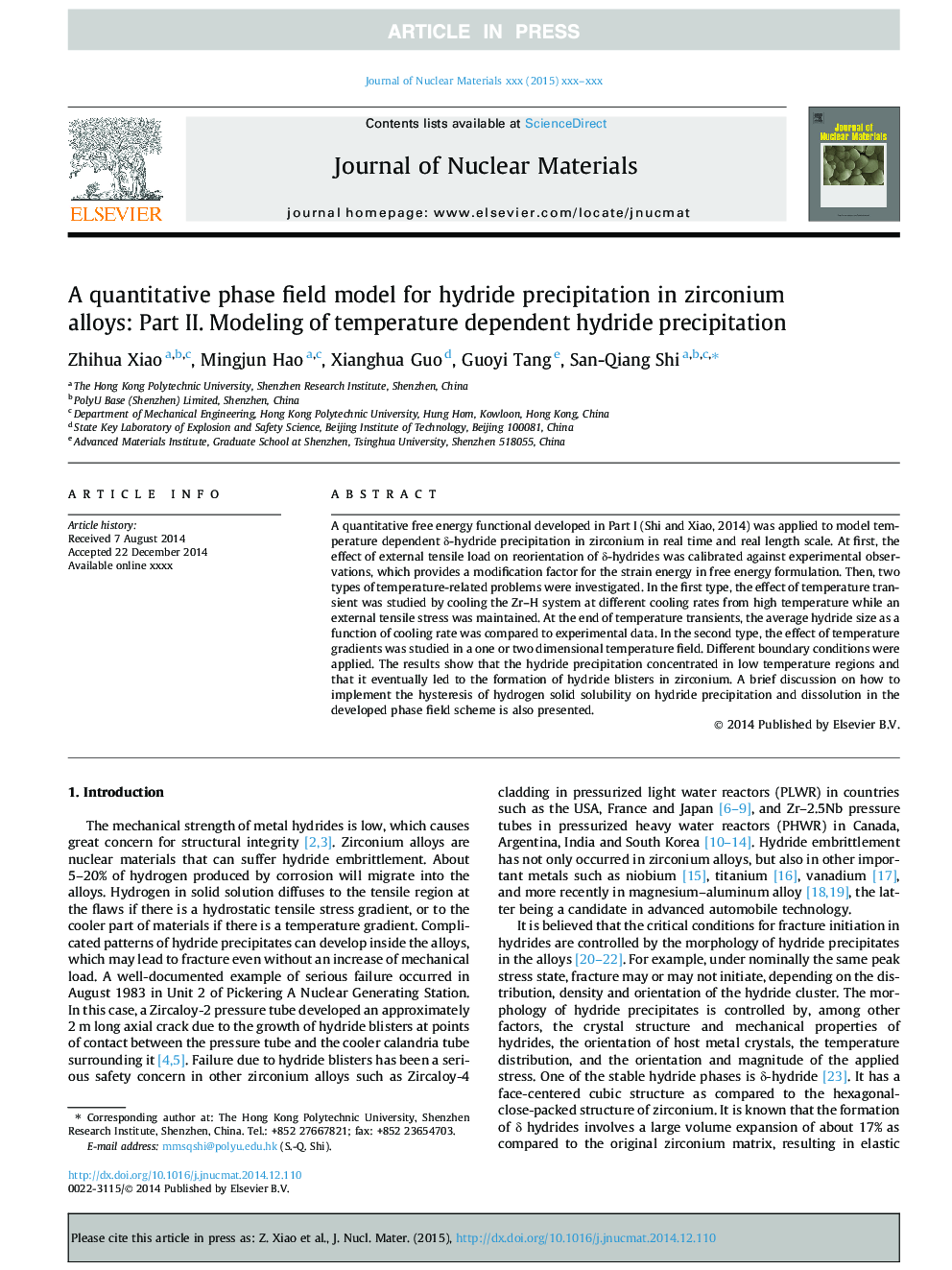| کد مقاله | کد نشریه | سال انتشار | مقاله انگلیسی | نسخه تمام متن |
|---|---|---|---|---|
| 7966517 | 1514186 | 2015 | 9 صفحه PDF | دانلود رایگان |
عنوان انگلیسی مقاله ISI
A quantitative phase field model for hydride precipitation in zirconium alloys: Part II. Modeling of temperature dependent hydride precipitation
ترجمه فارسی عنوان
مدل فاز کم فاز برای رسوب هیدرید در آلیاژهای زیرکونیوم: قسمت دوم. مدلسازی هیدرید وابسته به دما
دانلود مقاله + سفارش ترجمه
دانلود مقاله ISI انگلیسی
رایگان برای ایرانیان
موضوعات مرتبط
مهندسی و علوم پایه
مهندسی انرژی
انرژی هسته ای و مهندسی
چکیده انگلیسی
A quantitative free energy functional developed in Part I (Shi and Xiao, 2014 [1]) was applied to model temperature dependent δ-hydride precipitation in zirconium in real time and real length scale. At first, the effect of external tensile load on reorientation of δ-hydrides was calibrated against experimental observations, which provides a modification factor for the strain energy in free energy formulation. Then, two types of temperature-related problems were investigated. In the first type, the effect of temperature transient was studied by cooling the Zr-H system at different cooling rates from high temperature while an external tensile stress was maintained. At the end of temperature transients, the average hydride size as a function of cooling rate was compared to experimental data. In the second type, the effect of temperature gradients was studied in a one or two dimensional temperature field. Different boundary conditions were applied. The results show that the hydride precipitation concentrated in low temperature regions and that it eventually led to the formation of hydride blisters in zirconium. A brief discussion on how to implement the hysteresis of hydrogen solid solubility on hydride precipitation and dissolution in the developed phase field scheme is also presented.
ناشر
Database: Elsevier - ScienceDirect (ساینس دایرکت)
Journal: Journal of Nuclear Materials - Volume 459, April 2015, Pages 330-338
Journal: Journal of Nuclear Materials - Volume 459, April 2015, Pages 330-338
نویسندگان
Zhihua Xiao, Mingjun Hao, Xianghua Guo, Guoyi Tang, San-Qiang Shi,
